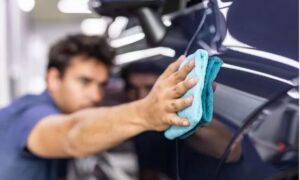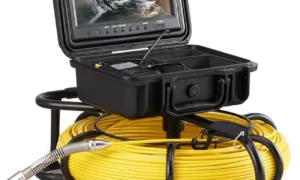As the world is changing, we should be changing too. It’s only possible to make money in this altering reality if you are aware of forms, volume and interrelation of consumption with producers and consumers.
The profession of makeup artist is currently transforming into makeup designer due to all tech innovations in the whole digital universe with the appearance of NFT, Metaverse and other virtual platforms. A new generation of makeup artists is more successful online as they use technologies and this is an absolutely new concept of work. They “can now create intricate and unique beauty looks right from their laptop or phone” says Kieran Galpin (a freelance journalist with a special interest in the intersections of pop culture and society). As digital design looks more attractive for the younger audience, makeup brands also started to collaborate with digital makeup creators at the virtual platforms to level up engagement.
Let’s observe what’s happening on the beauty market right now.
From the part of creators, many popular Instagram bloggers like @Issy_hine (33k followers), @Julianwolfstoller (29,3k followers), @a1jewel0310 (29,8k followers) do selfies with makeup and then transform it easily into a futuristic design. It’s impossible to replicate this creative look with the usual means of cosmetic tools. The reason for this is that producers cannot supply us with such a rich gradation of color palette, and those textures like ones we can apply in digital pictures as those simply don’t exist. For example melting metal, furry butterfly wings or pearl plastic. It looks catchier and levels up engagement as design creates a truly unrepeatable character. Likeability of this tendency can be observed by the growing number of followers, for example of @Meicrosoft (1,4 million followers on Instagram) who is building self awareness in the gaming world. Consequently, this trend is reflected in real life from the perspective of new wave consumers as Generations Z and Y. Those makeup lovers are ready to wear designed makeup rather than nude.
From the perspective of beauty, makeup brands have also been active: “during the last two years, a variety of brands, like Clinique, Charlotte Tilbury, Nars and Guerlain have tried out using the metaverse and web3, creating products for avatars, NFTs and virtual storefronts, experiences and games” (Joan Kennedy, Business of Fashion). “In 2022, L’Oréal filed 17 trademarks for virtual cosmetics and Estée Lauder partnered with Decentraland’s Metaverse Fashion Week. Clinique saw a 60 percent rise in search traffic and 20 percent increase in social engagement”, WWD reported in February. How to explain this phenomenon? The arrival of technology has enhanced reality, and this mixed reality, or augmented reality, is forming a new world in which physical and virtual objects are combined on multiple levels. Therefore, makeup brands use virtual experiences as tools of effective visual communication with Gen Z and Y audience. According to modern researchers of social sciences like Yeo J.P. in his work describe visual communication as the transmitting of ideas and knowledge in visible ways. This is how art and design could be the means of communication with Gen Z and Y as they comprehend and accept this language. Consequently, designers deliver messages through makeup created in social media with the help of editing tools. And those messages are replied as people copy it and wear it in real life.
As a researcher, I investigated consumer behavior of GenZ in my Master thesis at the Istituto Marangoni in Paris. Our new generation is used to the rapidly changing environment. And this affects their consumer behavior, too. They are attracted by sophisticated and exclusive, easily transforming designs and unusual styles for expressing their inner “I”. Thus, the customer experience is transforming into new forms of hybrid reality. This is the way visual communication works today, with today’s customers. According to the research of GlobalWebIndex (December 2019), 17% of Gen Z customers are positive about voice technology offering beauty advice and 28% would like to get personalized skincare recommendations based on machine learning algorithms. 33% of respondents would like to have smart mirrors and 26% would use augmented reality apps to try on makeup. The younger generation is eager to wear the craziest and the most creative ideas for makeup presented at Metaverse fashion weeks. All talented creators have already found their audience. The accent of modern versions of makeup is on style, color, originality and self-expression.
The way I see it, the market of beauty and makeup today shapes the makeup artist job into virtual design and creates one more direction for developing the career and earning, digital makeup design. The biggest opportunity is collaboration with beauty and makeup brands which are launching the first digital makeup lines (Like Dior https://www.alessiaalberti.com) at Metaverse and NFT and this is how the process becomes mutually beneficial. Moreover, digital artists can design original and unrepeatable filters on Instagram for users. We can see that digital makeup design is getting popular because it looks catchy on Instagram and helps grow the audience. The makeup lovers are fascinated by this aesthetic as it is easy to apply. This is why we need to consider adding these new technologies in our job as it is a new fresh area of expertise for makeup artists, and a new source of income.
Victoria Wonck
Celebrity Makeup Artist, Art Director and Gen Z Visual Communication Expert https://independent.academia.edu/VictoriaWonck



































